Abstract
Complaints of taste and smell dysfunction unaccompanied by symptoms of neurological or nasal problems are not uncommon. However, "I can't taste" is not necessarily an accurate symptom description. Complaints tend to reflect the common confusion between taste sensations (that is, salt, sour, sweet, bitter) and flavor sensations (including taste, smell, temperature, and texture). A number of questions have been identified that help classify symptoms according to the type of dysfunction (taste, smell, or both): whether the problem is quantitative (reduced or absent sensation) or qualitative (distorted sensations); and what might have caused the dysfunction. Directed questioning can yield a clinical history that predicts chemosensory function and identifies the most likely cause of the problem. Questions were assessed by comparing the self-reports of taste and smell symptoms to the clinical evaluation of chemosensory function for 101 new patients seen in the Taste and Smell Center at the University of Connecticut Health Center in 1983.
Full text
PDF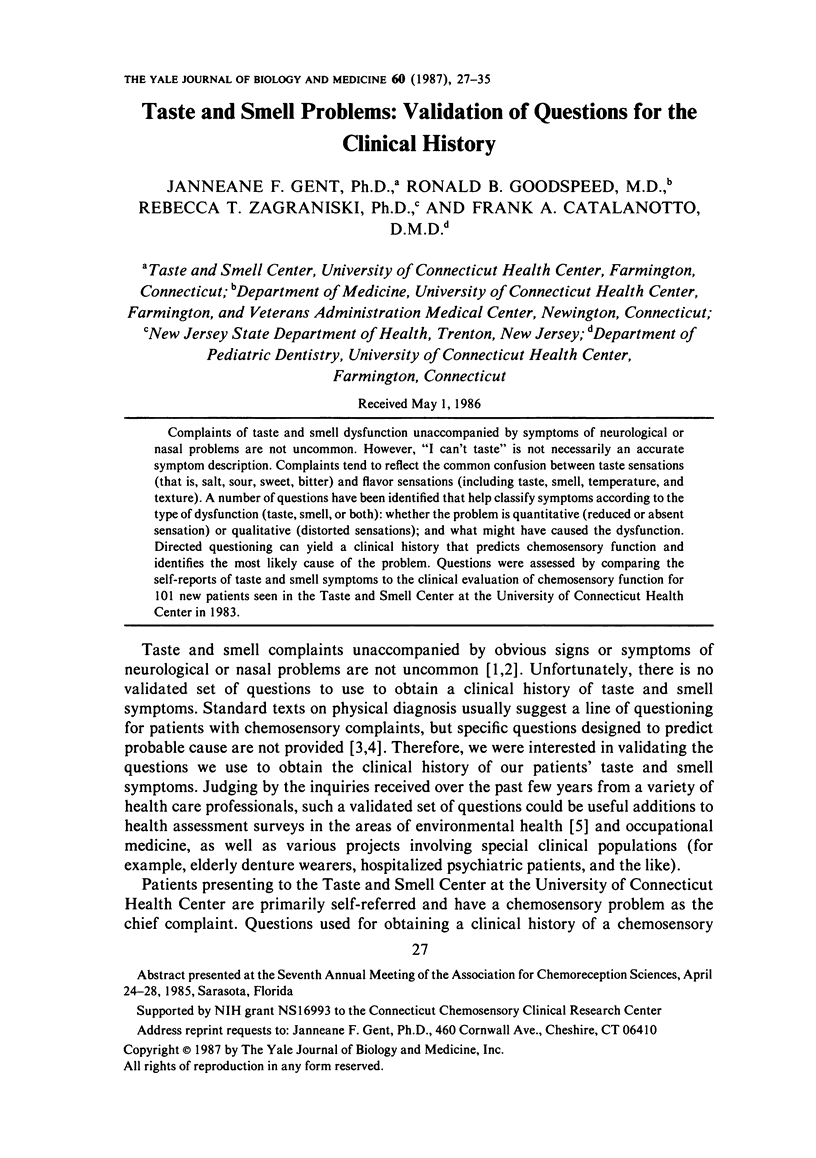
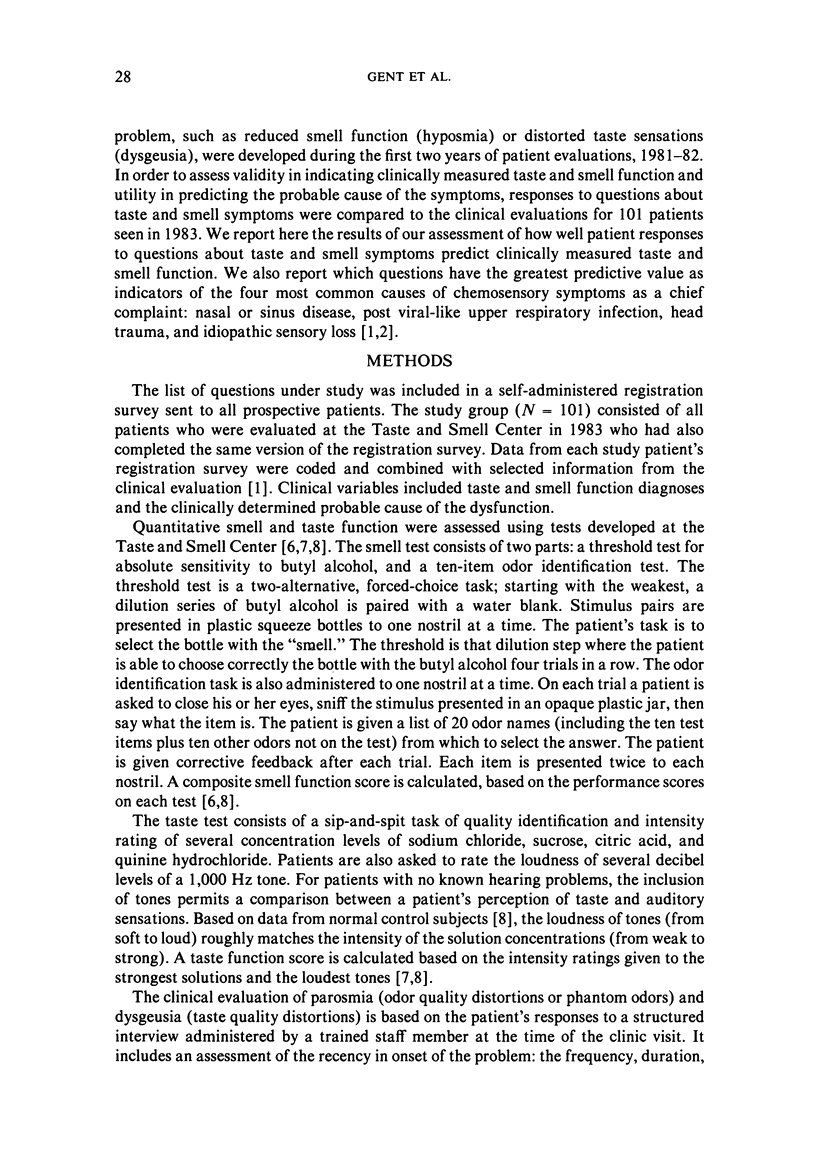
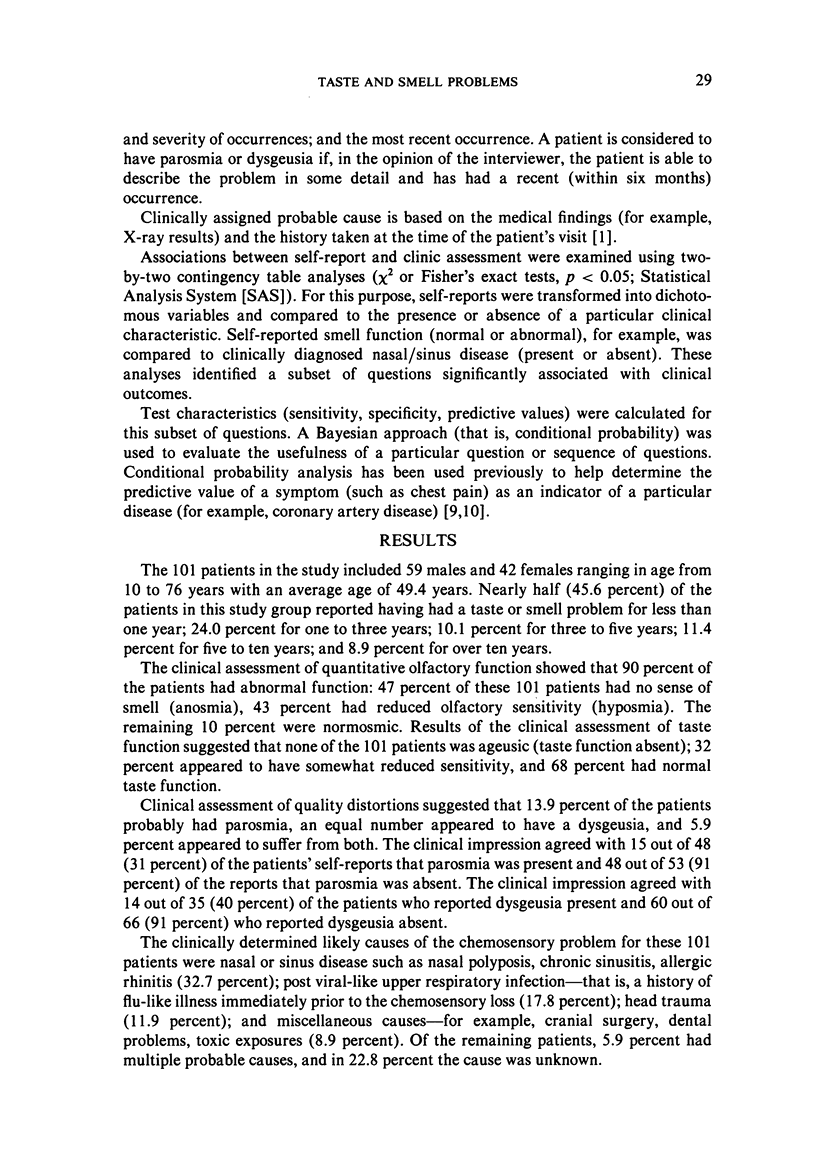
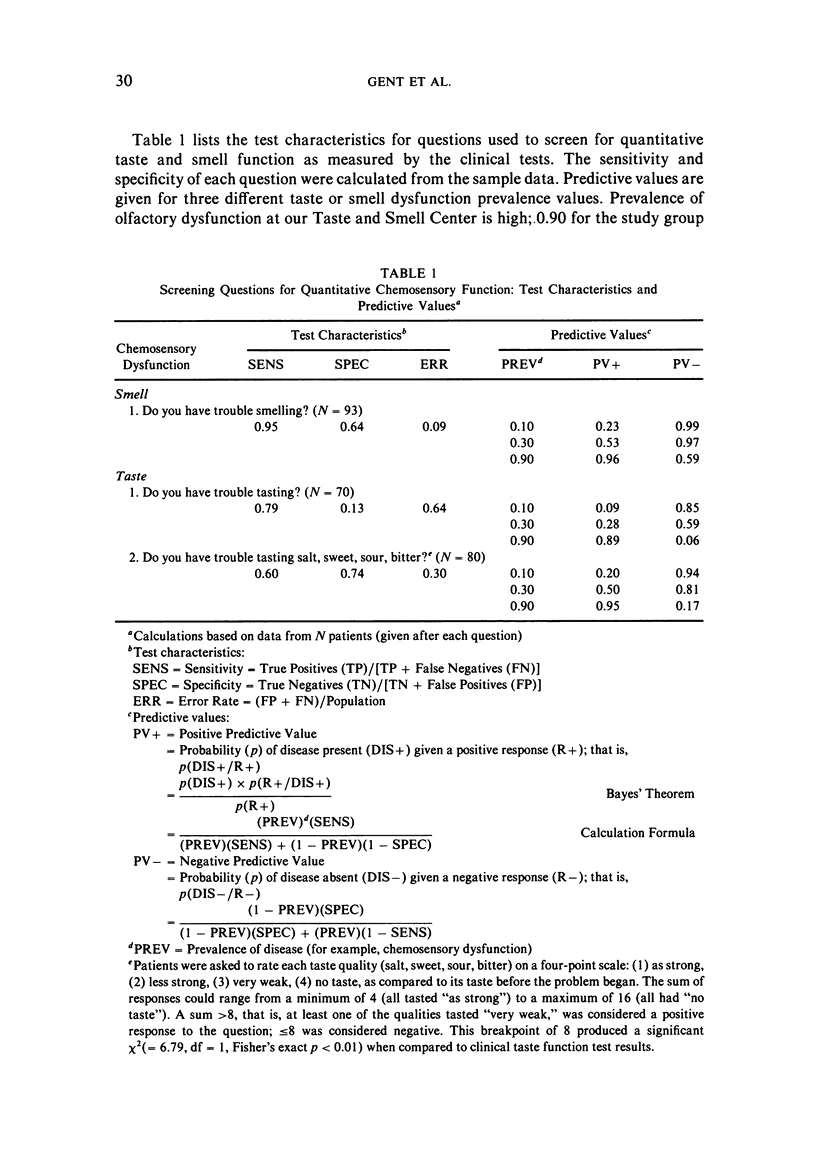
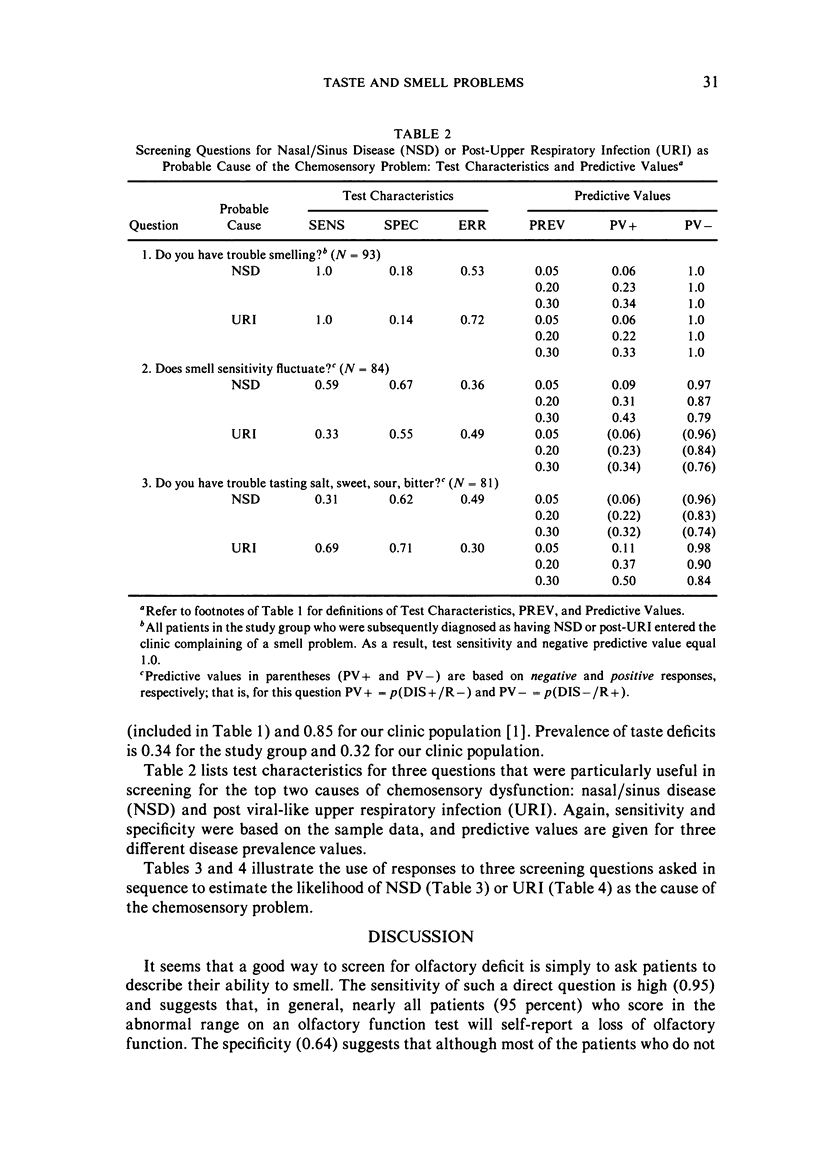
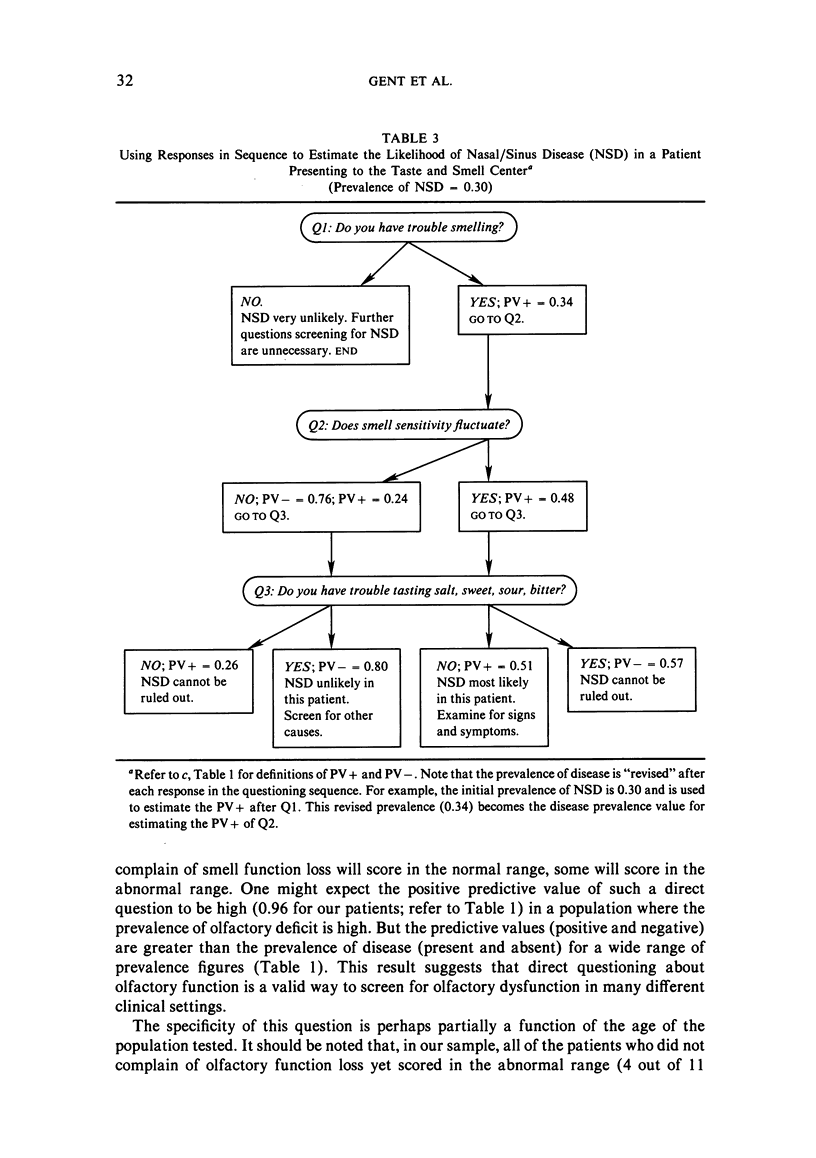
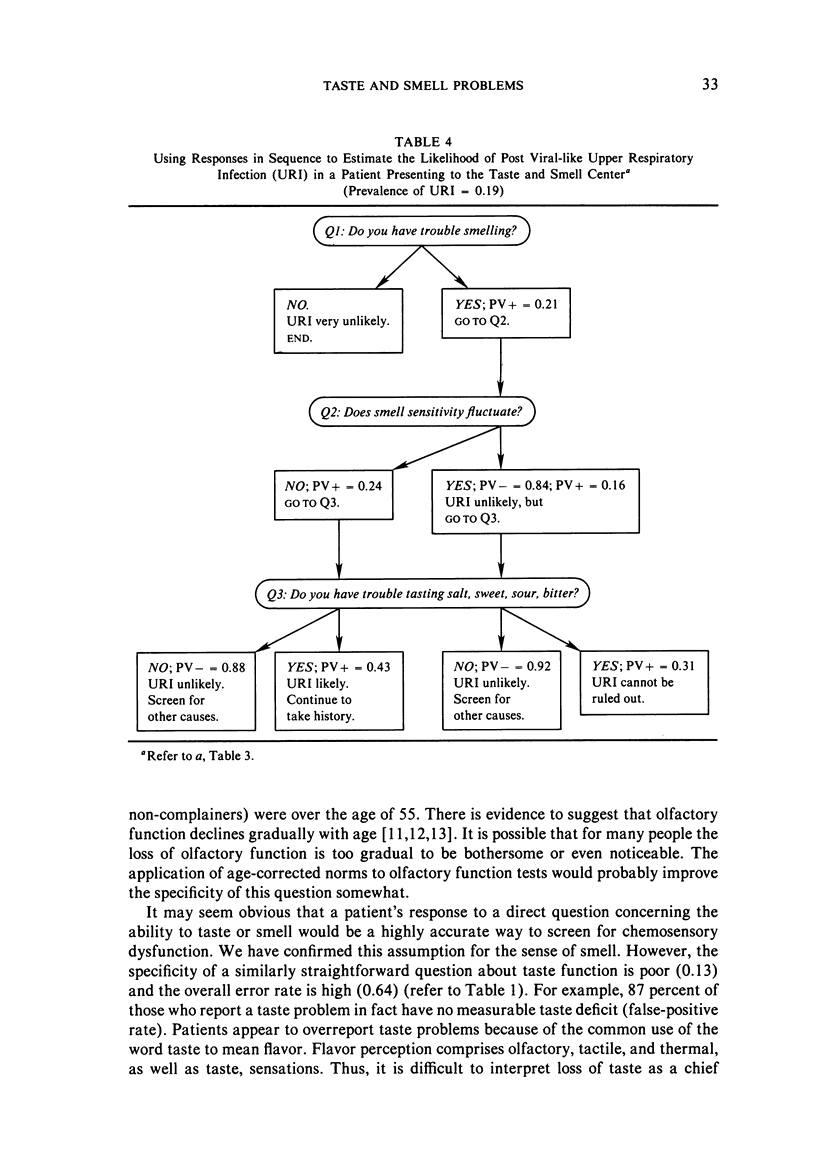

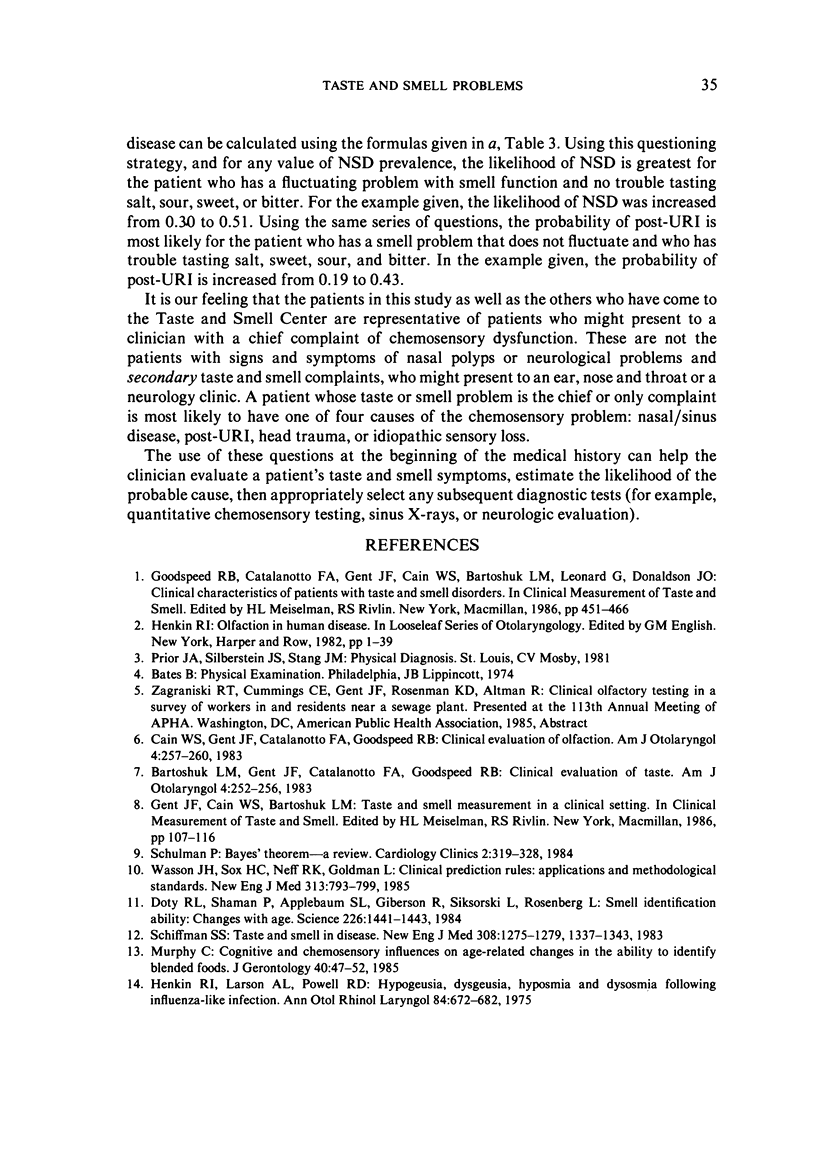
Selected References
These references are in PubMed. This may not be the complete list of references from this article.
- Bartoshuk L. M., Gent J., Catalanotto F. A., Goodspeed R. B. Clinical evaluation of taste. Am J Otolaryngol. 1983 Jul-Aug;4(4):257–260. doi: 10.1016/s0196-0709(83)80069-6. [DOI] [PubMed] [Google Scholar]
- Cain W. S., Gent J., Catalanotto F. A., Goodspeed R. B. Clinical evaluation of olfaction. Am J Otolaryngol. 1983 Jul-Aug;4(4):252–256. doi: 10.1016/s0196-0709(83)80068-4. [DOI] [PubMed] [Google Scholar]
- Doty R. L., Shaman P., Applebaum S. L., Giberson R., Siksorski L., Rosenberg L. Smell identification ability: changes with age. Science. 1984 Dec 21;226(4681):1441–1443. doi: 10.1126/science.6505700. [DOI] [PubMed] [Google Scholar]
- Henkin R. I., Larson A. L., Powell R. D. Hypogeusia, dysgeusia, hyposmia, and dysosmia following influenza-like infection. Ann Otol Rhinol Laryngol. 1975 Sep-Oct;84(5 Pt 1):672–682. doi: 10.1177/000348947508400519. [DOI] [PubMed] [Google Scholar]
- Murphy C. Cognitive and chemosensory influences on age-related changes in the ability to identify blended foods. J Gerontol. 1985 Jan;40(1):47–52. doi: 10.1093/geronj/40.1.47. [DOI] [PubMed] [Google Scholar]
- Schiffman S. S. Taste and smell in disease (second of two parts). N Engl J Med. 1983 Jun 2;308(22):1337–1343. doi: 10.1056/NEJM198306023082207. [DOI] [PubMed] [Google Scholar]
- Schulman P. Bayes' theorem--a review. Cardiol Clin. 1984 Aug;2(3):319–328. [PubMed] [Google Scholar]
- Wasson J. H., Sox H. C., Neff R. K., Goldman L. Clinical prediction rules. Applications and methodological standards. N Engl J Med. 1985 Sep 26;313(13):793–799. doi: 10.1056/NEJM198509263131306. [DOI] [PubMed] [Google Scholar]


